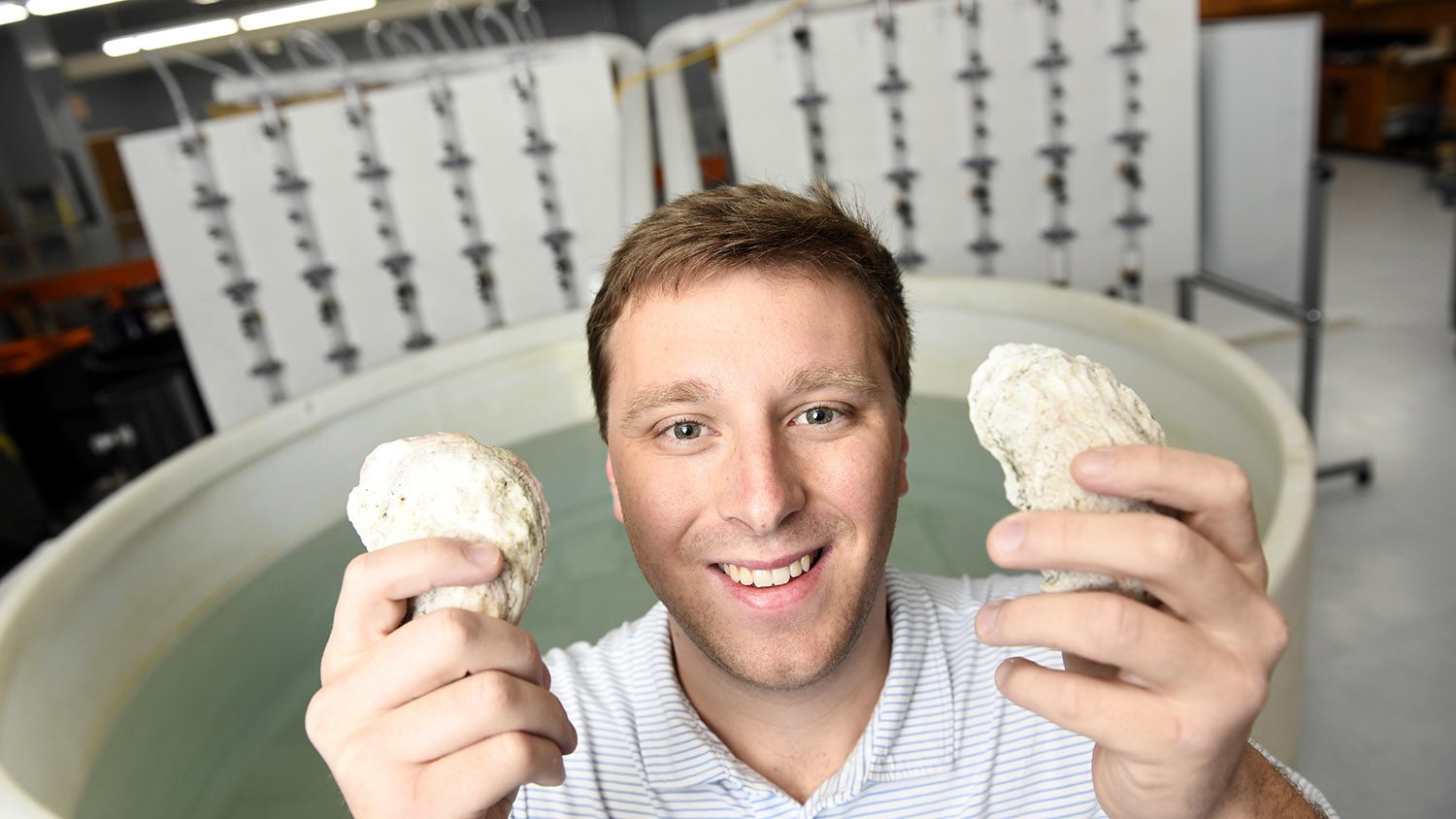
Charles Eason was one of the first students to sign up for the Department of Agricultural and Resource Economics’ pilot program in entrepreneurship.
When he graduates in April 2019, Eason will be one of the program’s first success stories.
Eason’s big idea: an integrated mobile shell sh hatchery for oysters and clams. He workshopped it in his ARE classes, cultivated investors through personal and program contacts, then collaborated with Biological and Agricultural Engineering senior design team in order to design a prototype. The name of his new business will ring true for anyone who’s heard a Downeast accent: Hoi Toiders Mariculture.
What does the mobile hatchery do?
We’re trying to lower the barriers to entry for oyster growers. The mobile hatchery takes oysters and clams from the larval stage and creates them into seed. Our idea is to sell the seed to growers at first, then our long-term goal is to contract seed and implement some risk-sharing.
What do you tell potential investors?
It’s totally different from anything anyone else has done in this business, and we’ve got the right team to do it. I think it is going to be good for North Carolina. It’s long-term, it’s sustainable, it’s good for the environment. It’s pro table, when done correctly. And it’s something that’s going to strengthen our coastal communities by bringing more viable jobs there, which is important to me.
How did you come up with the name “Hoi Toiders”?
I wanted a name that is unique to North Carolina – and anybody who is familiar with our coastal communities knows that in certain parts of Ocracoke or Hyde County, the accents change. I tried to spell it the way they speak there.
What got you interested in entrepreneurship?
My dad owned his own business as a small tobacco wholesaler and my mom started a hand-woven belt business. It always appealed to me that they were their own bosses.
What would you say is the key to an entrepreneurial mindset?
Being able to recognize an opportunity. You find gaps in the marketplace and you figure out ways to ll those gaps.
Was there anything you learned in ARE’s entrepreneurship program that surprised you?
I thought that once you had a good idea, everything would fall into place. Well, as I found out: no, that’s not at all
how it works. You need to learn how to do pitches and value propositions. You need to know how to do cash ow statements and pro t/loss statements. You have to figure out what type of company you’re starting, what makes the most sense for tax purposes, how LLCs work, how operating agreements work – all sorts of stuff like that. There was a lot I didn’t know.
What’s your big dream for Hoi Toiders?
The biggest picture would be to move beyond shell sh and get into other forms of seafood using multiple facilities … and basically become a large, vertically integrated seafood company, similar to what you see in hogs or chickens, where you have these large integrators. I would like to be an integrator, but for seafood production.
This post was originally published in College of Agriculture and Life Sciences News.